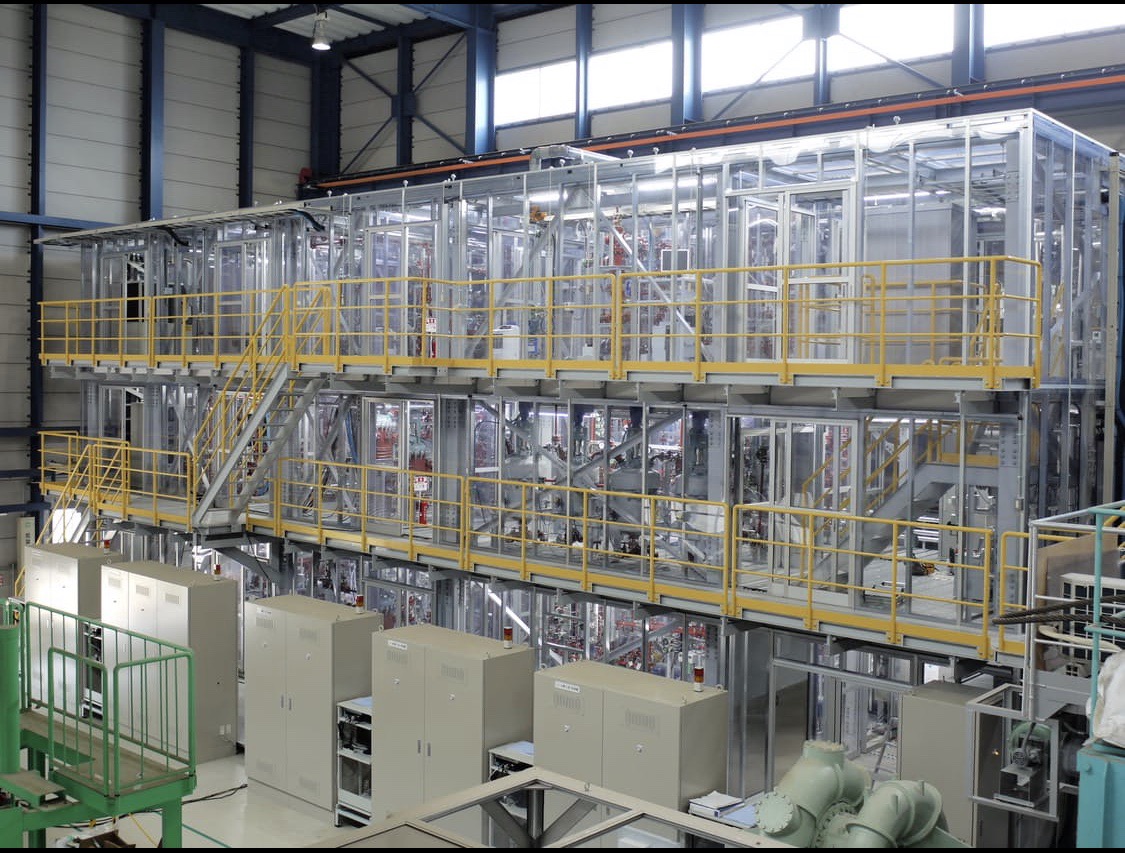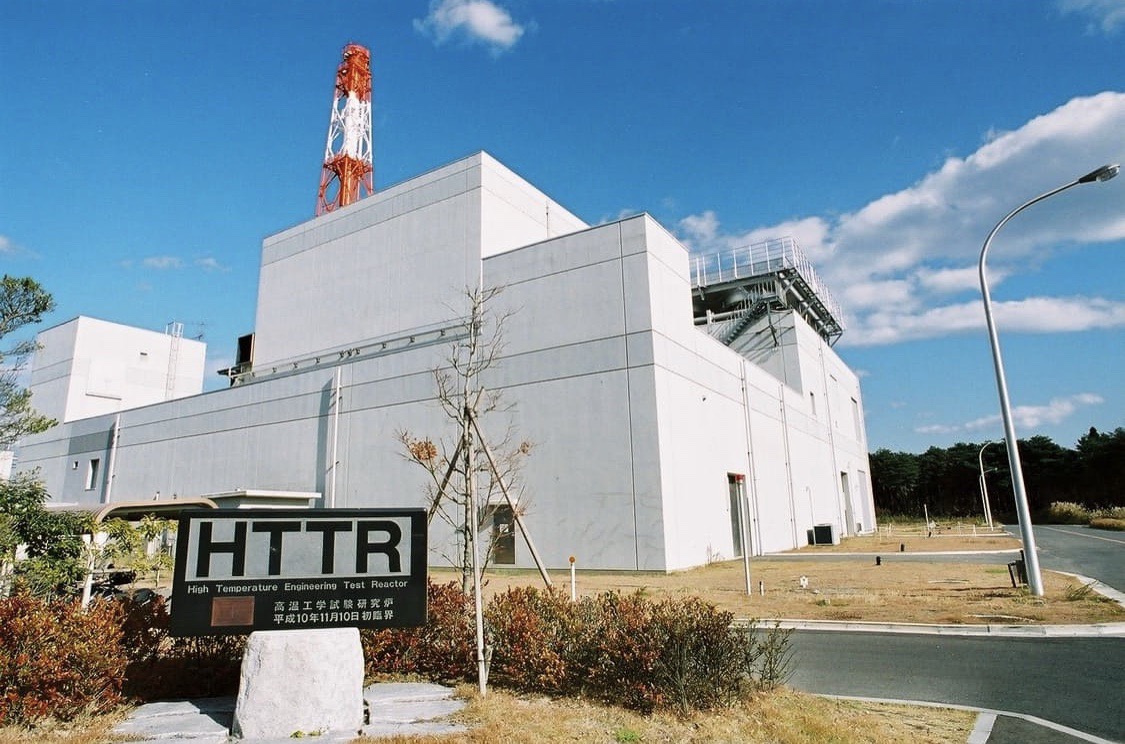[From Chisato Horiuchi in Tokyo, Japan]

The core of a high-temperature gas reactor that achieved full output for the first time in 11 years (provided by JAEA)
The government will start research on mass production of hydrogen fuel, which is the key to the realization of a carbon-free society, in small nuclear reactors. The test operation will start at the beginning of the year using the research reactor "High Temperature Gas Reactor" (Oarai Town, Ibaraki Prefecture) of the Japan Atomic Energy Agency. This is one of the few projects that will accelerate research as the government does not give a clear picture of the future of nuclear power. With the stagnation of nuclear energy development in the world except China and some developed countries, will hydrogen help or stay a life-prolonging measure? It can be said to be a crossroads of nuclear power plants.
Hydrogen for 360,000 fuel cell vehicles in one practical furnace
This research reactor is called the "High Temperature Engineering Test Reactor (HTTR)" and was constructed by JAEA with an investment of about 85 billion yen and started operation in 1998. It does not generate electricity and has a heat output of 30,000 kW. Based on the 2011 TEPCO Fukushima Daiichi Nuclear Power Plant accident, we strengthened safety measures and passed the national examination. It restarted at the end of July 2009 for the first time in 10 years, and achieved 100% output on September 19.
While ordinary nuclear power plants (light water reactors) are cooled with water, high-temperature gas reactors are cooled with helium gas. Even if an accident such as the Fukushima Daiichi Nuclear Power Plant accident occurs in which power is lost, it will naturally cool down due to gas convection, and it is said to be highly safe.
It is also characterized by being able to extract high-temperature heat. In 2004, HTTR succeeded in extracting heat at 950 degrees Celsius, the highest temperature for a nuclear reactor. In 2010, it succeeded in continuous operation for 50 days at this temperature, breaking the record.
The aim of the experiment is mass production of hydrogen using this high temperature. The government stipulated in its green growth strategy that "elemental technologies for hydrogen production in high-temperature gas reactors will be established by 30 years," and the Agency for Natural Resources and Energy and others have added research funds to the budget request for FY2010.
Hydrogen does not emit carbon dioxide (CO2) when burned, and in particular, "green hydrogen" produced by electrolyzing water with renewable energy is considered to be the "ultimate clean energy." However, a large amount of energy is required during manufacturing, and the cost is unknown. Then, the method of decomposing water by heat came to the surface.

Experimental equipment for continuous production of hydrogen by IS method (provided by JAEA)
JAEA devised a new technology "IS method" that adds iodine and sulfur to water and thermally decomposes it at 900 degrees Celsius. The heat of the high-temperature gas reactor is suitable for this reaction, and we have advanced technological development ahead of overseas forces.
The organization estimates that one 600,000-kilowatt high-temperature gas reactor can cover the hydrogen used by 360,000 fuel cell vehicles for annual driving. Assuming that it will be supplied to steelworks, etc., it is said that if there are about 70 units in numbers, it will be possible to supply about 40% of the hydrogen that will be needed in Japan in 50 years.
Nuclear power plants originally emit less CO2, and it seems like a detour to produce hydrogen and supply it to cars. However, the efficiency of converting heat into electricity at a normal nuclear power plant is only over 30%, and the rest is discarded as waste heat. High-temperature gas reactors can use heat efficiently, and the hydrogen produced can be stored unlike electricity.
However, the IS method is at the stage of basic research, and it is expected that it will be put into practical use after 40 years. For the time being, we aim to mass-produce "blue hydrogen" extracted from natural gas in parallel. The disadvantage of this is that CO2 is generated as a by-product, but the technology is already in the practical stage. First of all, it plans to prove that it can mass-produce hydrogen and work on creating a supply chain to deliver it to consumers.

Overseas, the focus is on Britain, the United States, and China
Overseas, high-temperature gas reactors are being developed as promising candidates for next-generation nuclear reactors.
In 1950, the United Kingdom set "real zero emissions" of greenhouse gases and positioned small reactors (new module reactors) including high-temperature gas reactors as an important technology. In the United States, venture companies are designing furnaces, and the Department of Energy is supporting development. In addition, Poland has announced a shift from coal-fired power plants to nuclear power plants, with particular emphasis on introducing technology for high-temperature gas reactors.
Among them, China is the one that works as a whole country. The high-temperature gas reactor was selected as one of the main goals of the national plan "Made in China 2025", and the research reactor started operation in 2000. It was reported that a state-owned enterprise in Shandong Province built a demonstration reactor with an output of 200,000 kW and reached a criticality in mid-September. It has also announced plans to build a commercial furnace.
Uncertainty in both technology and policy
Is Japan really superior because its research reactors have been shut down for more than 10 years? An official of the Japan Atomic Energy Agency said, "Since we have continued research on hydrogen even while the reactor is shut down, our technological capabilities are still at the top level."
However, the production of green hydrogen has high technical hurdles, and the policy position of nuclear power cannot be denied.
In the basic energy plan proposed by the Ministry of Economy, Trade and Industry in July, research promotion was stipulated that "various industrial uses including hydrogen production are expected" for high-temperature gas reactors. However, it is treated as a "test research reactor". It is unclear when and who will design and construct the demonstration reactor, which is the next step, and whether it can be located with the understanding of the residents. The government is promoting technical cooperation with Poland, and even if the technology can be demonstrated, there is a high possibility that the export business will become the main body.
The views of industry and experts are divided. Shiro Arai, chairman of the Japan Atomic Industrial Forum, which is created by a nuclear-related company, said, "Industry is also developing technology for high-temperature gas reactors. It will contribute to securing and training nuclear human resources."






